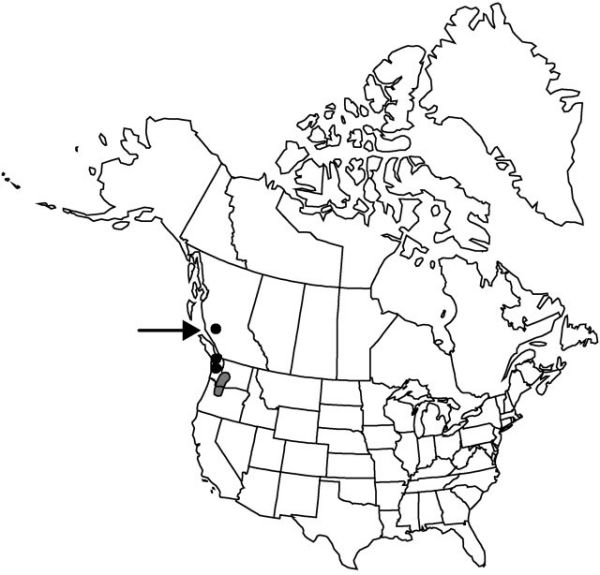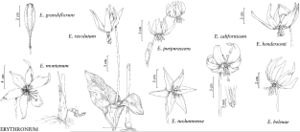Erythronium montanum
Proc. Amer. Acad. Arts 26: 130. 1891.
Bulbs narrowly ovoid, 25–60 mm. Leaves 10–20 cm; blade green, ovate to broadly lanceolate, base ± abruptly narrowed to petiole, margins wavy. Scape 12–35 cm. Inflorescences 1–3-flowered. Flowers: tepals white to creamy white with bright yellow zone at base, broadly ovate to broadly lanceolate, 25–45 mm, inner wider than outer, auriculate at base, length less than 4 times width; stamens 12–24 mm; filaments white, linear, slender, less than 0.8 mm wide; anthers bright yellow; style white, 13–25 mm; stigma with slender, usually recurved lobes 1–5 mm. Capsules oblong, 3–6 cm. 2n = 24.
Phenology: Flowering summer, usually soon after snowmelt (Jun–Aug).
Habitat: Montane and subalpine meadows, open coniferous forests
Elevation: (300–)800–2000 m
Distribution

B.C., Oreg., Wash.
Discussion
This species occurs in the Coast Ranges of southern British Columbia, and disjunctly to southern Vancouver Island, the Olympic Peninsula, and Cascade Mountains from Mount Rainier National Park in Washington to central Oregon.
Selected References
None.
